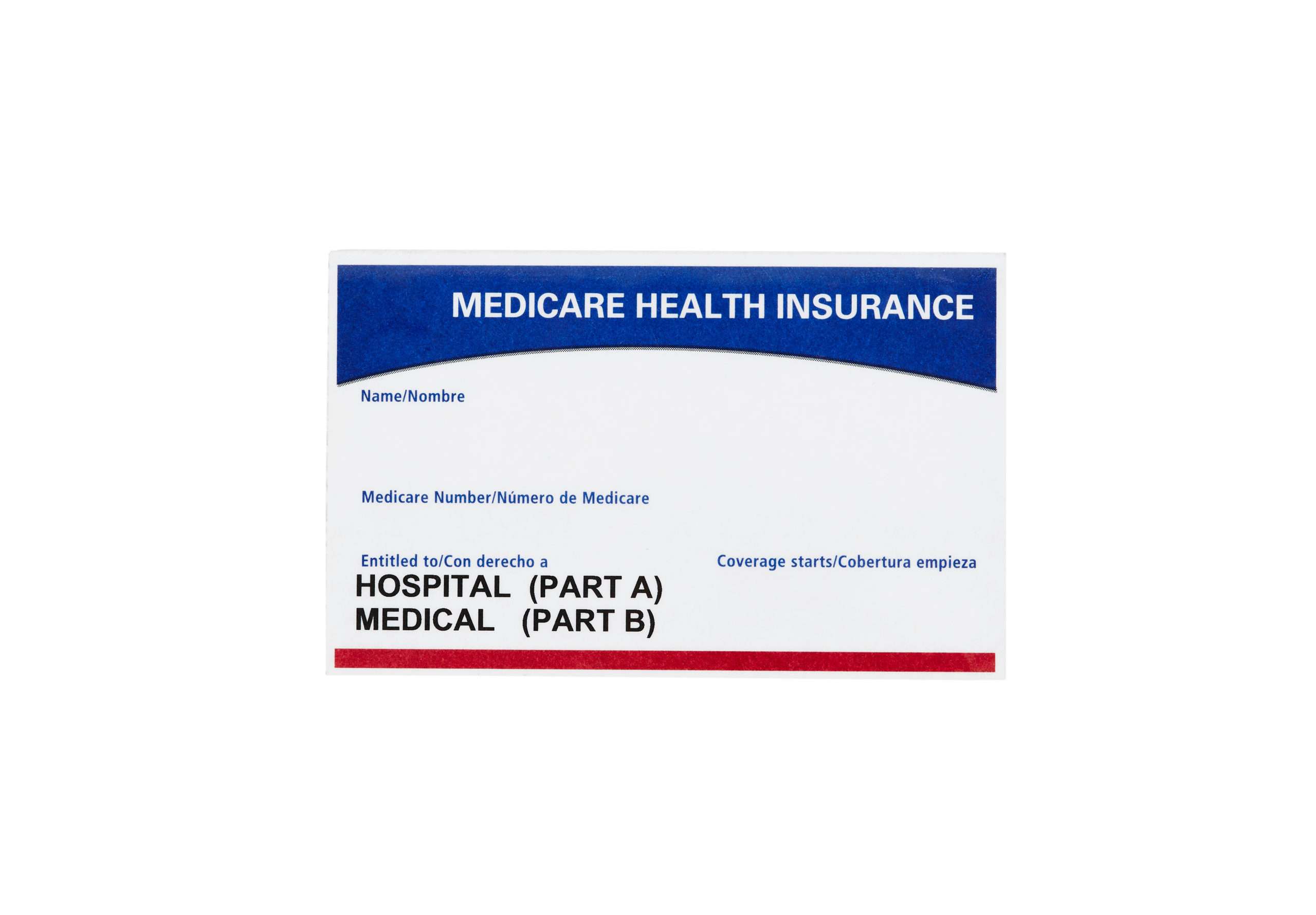Medicare Advantage vs. Medicare Supplement: What to Know

Key Highlights
- Medicare Advantage and Medicare Supplement plans are two different types of coverage options for beneficiaries.
- Medicare plans, also known as Part C, are offered by private insurance companies provide comprehensive coverage that includes Parts A and B, along with additional benefits like prescription drug coverage and wellness programs.
- Medicare Supplement plans, also known as Medig, work alongside Original Medicare (Parts A and B to help cover out-of-pocket costs such as deductibles copayments, coinsurance.
- Medicare Advantage plans replace Original Medicare, while Medicare Supplement plans work alongside it.
- Medicare Advantage plans often have network restrictions, requiring you to use doctors and hospitals within the plan’s network, while Medicare Supplement plans allow you to see any healthcare provider nationwide who accepts Medicare.
- Medicare Advantage plans may offer lower monthly premiums compared to Medicare Supplement plans, but they may have higher out-of-pocket costs such as copayments and deductibles.
- Medicare Supplement plans generally have higher monthly premiums but provide more predictable out-of-pocket costs and the freedom to see any healthcare provider that accepts Medicare.
Introduction
Navigating the complexities of Medicare can be overwhelming. Understanding the differences between Medicare Advantage plans and Medicare Supplement insurance is crucial for making informed healthcare choices. By breaking down the structure, coverage options, and enrollment variances, beneficiaries can effectively compare these two paths and determine which provides the best and different benefits for their specific health needs. This guide offers an in-depth analysis of Medicare Advantage and Medicare Supplement, empowering individuals to select the most suitable option based on their healthcare needs and financial considerations.
Understanding Medicare: Basics to Get You Started
Medicare is a federal health insurance program primarily for individuals aged 65 and older. It consists of different parts – Part A covers hospital insurance, while Part B includes medical insurance. Part C offers Medicare Advantage plans provided by private insurers, and Part D provides prescription drug coverage. Medicare beneficiaries have options to enhance their coverage through Medicare Supplement plans, which offer additional coverage to fill gaps in original Medicare. Understanding these fundamental components is crucial for navigating the complexities of healthcare and making informed decisions.
The Structure of Medicare: Parts A, B, C, and D
Medicare comprises four main parts:
- Part A covers hospital insurance.
- Part B offers medical insurance.
- Part C, also known as Medicare Advantage, combines Part A and B benefits.
- Part D provides prescription drug coverage.
- Understanding these components is crucial when navigating Medicare coverage and selecting the right plan to suit individual healthcare needs. Each part plays a distinct role in ensuring comprehensive health insurance for Medicare beneficiaries.
Key Differences Between Original Medicare and Medicare Advantage
Medicare Advantage, unlike Original Medicare, includes Part A and B coverage along with additional benefits such as Part D for prescription drug coverage. Medicare Advantage is offered through private insurers, giving beneficiaries the option for extra benefits beyond what Original Medicare provides. Unlike Original Medicare, Medicare Advantage plans may have different provider networks and cost-sharing structures. While Original Medicare allows for nationwide coverage, Medicare Advantage plans typically have network restrictions based on zip code.
Deep Dive into Medicare Advantage Plans
Medicare Advantage plans, also known as Medicare Part C, offer Medicare Part A and Part B benefits through private insurers approved by Medicare. These plans often include additional benefits like prescription drug coverage (Part D) and sometimes dental or vision coverage. By law, they must provide all the same rights as Original Medicare, but they can also offer extra coverage not available in Original Medicare, such as gym memberships or transportation services. Monthly premiums for Medicare Advantage plans can vary depending on the plan’s coverage level and location.
How Medicare Advantage Works
Medicare Advantage operates by combining parts A and B coverage into a single plan offered by private insurers approved by Medicare. Part C plans may include additional benefits like prescription drug coverage. Beneficiaries must be enrolled in Original Medicare and continue to pay the Part B premium. When using Medicare Advantage, individuals still have Medicare rights and protections, though some costs like copayments and coinsurance may vary. These plans often have network restrictions, requiring members to use specific doctors and facilities.
Pros and Cons of Choosing Medicare Advantage
One of the primary advantages of selecting a Medicare Advantage plan is the potential for additional benefits beyond what Original Medicare offers, such as vision, dental, and prescription drug coverage. Moreover, these plans often come with a bundled approach, simplifying healthcare management. On the flip side, limitations on out-of-network coverage and the necessity to use network providers can be drawbacks. Understanding these trade-offs is crucial when deciding if Medicare Advantage is the right choice for your healthcare needs.
Costs Associated with Medicare Advantage Plans
Medicare Advantage plans offer various cost structures. Understanding the costs associated with these plans is crucial. Monthly premiums depend on the plan chosen, with some plans having premiums as low as $0. Additionally, copayments and coinsurance costs apply for services used, especially for expensive hospital stays and procedures. Out-of-pocket maximums limit expenses, providing financial protection. Some plans may include prescription drug coverage, impacting overall costs. Considering these factors, including coinsurance costs, is essential when assessing the financial implications of Medicare Advantage plans.
Exploring Medicare Supplement (Medigap) Insurance
Medicare Supplement Insurance, commonly known as Medigap, plays a crucial role in enhancing Medicare coverage. It fills the gaps left by Original Medicare, covering expenses like copayments and deductibles. Medigap plans are offered by private insurers and provide additional benefits such as foreign travel coverage. Understanding the costs associated with Medigap policies is essential, as they vary based on the plan chosen and the location of the beneficiary. Medigap plans offer peace of mind by offering comprehensive coverage beyond what Original Medicare provides.
The Role of Medigap in Medicare Coverage
Medigap plays a crucial role in supplementing Original Medicare by covering some out-of-pocket costs like deductibles, coinsurance, and copayments. This additional insurance can provide financial relief for Medicare beneficiaries by filling the coverage gaps left by Medicare Part A and Part B. Medigap plans are offered by private insurance companies and are designed to work alongside Original Medicare to enhance overall healthcare coverage and reduce the financial burden on policyholders.
Benefits of Choosing Medicare Supplement Insurance
Choosing a Medicare supplement insurance plan offers a range of benefits that can enhance your healthcare coverage. These plans help cover out-of-pocket expenses like copayments, coinsurance, and deductibles that Original Medicare doesn’t fully cover. With a Medicare supplement plan, you have the flexibility to see any doctor or specialist who accepts Medicare patients without needing a referral. Additionally, some plans provide coverage for medical services received outside the U.S., which can be advantageous for frequent travelers.
Understanding the Costs of Medigap Policies
Medigap policies, also known as Medicare Supplement Insurance plans, offer financial benefits by covering certain out-of-pocket healthcare costs not paid by Original Medicare. Understanding the costs of Medigap policies is crucial for beneficiaries. These plans come with monthly premiums in addition to the premium for Medicare Part B. Factors like the type of Medigap plan, the insurance company, and the beneficiary’s location can influence the pricing. It’s essential to compare costs and coverage to choose a plan that best fits your needs.
Comparing Medicare Advantage and Medicare Supplement (Medigap Insurance)
Original Medicare provides basic coverage, while Medicare Advantage includes additional benefits like Part D. Medicare Supplement plans fill gaps in costs for those on Original Medicare. Enrollment periods differ between the two and can impact coverage options. Advantage plans are offered by private insurers and may have lower premiums but limited networks. Supplements have higher upfront costs but offer more comprehensive coverage and flexibility with healthcare providers. Understanding these differences is crucial in selecting the most suitable plan.
Eligibility and Enrollment Differences
When considering Medicare Advantage plans vs. Medicare Supplement insurance, it’s crucial to understand the eligibility and enrollment variances. Medicare Advantage typically requires beneficiaries to have Medicare Part A and Part B, reside in the plan’s service area, and not have end-stage renal disease in most cases. On the other hand, Medicare Supplement plans are available to individuals already enrolled in Medicare Part A and Part B. Additionally, Medicare Supplement plans have specific initial enrollment and open enrollment periods for enrollment, contrasting the continuous enrollment of Medicare Advantage plans.
Coverage Comparison: What’s Included and What’s Not
Coverage Comparison: What’s Included and What’s Not
When comparing Medicare Advantage and Medicare Supplement plans, it’s important to understand what each type of coverage includes and what it doesn’t.
Medicare Advantage plans, also known as Part C plans, provide coverage that is similar to Original Medicare (Parts A and B). However, they often include additional benefits such as prescription drug coverage, vision, dental, and hearing services. These plans are offered by private insurance companies and may have specific networks of healthcare providers that you need to use to receive full coverage. Some Medicare Advantage plans also include coverage for services not covered by Original Medicare, such as fitness programs or transportation services.
On the other hand, Medicare Supplement plans, also known as Medigap plans, work alongside Original Medicare coverage and help cover out-of-pocket costs like deductibles, copayments, and coinsurance. However, Medicare Supplement plans do not include prescription drug coverage. To get prescription drug coverage, you would need to enroll in a separate Medicare Part D plan. Understanding the differences between Medicare Advantage and Original Medicare coverage is crucial when deciding which option is best for your healthcare needs.
Here is a comparison of what’s included and what’s not included in Medicare Advantage and Medicare Supplement plans:
|
Medicare Advantage |
Medicare Supplement Plan |
|
|
Included |
Coverage similar to Original Medicare (Parts A and B) |
for out-of-pocket costs like deductibles, copayments, and coinsurance |
|
Included |
Additional benefits like prescription drug coverage, vision, dental, and hearing services |
|
|
Not Included |
Coverage for services not covered by Original Medicare, such as fitness programs or transportation services |
Prescription drug coverageDental, Vision and Hearing |
Making the Right Choice: Medicare Advantage or Medigap?
Making the Right Choice: Medicare Advantage or Medigap?
When it comes to choosing between Medicare Advantage and Medicare Supplement plans, it’s important to consider your individual needs and preferences.
Medicare Advantage plans can be a good option if you value additional benefits like prescription drug coverage, vision, dental, and hearing services. These plans may also offer cost savings through lower premiums and out-of-pocket expenses. However, you may be limited to using specific networks of healthcare providers and may need referrals to see specialists. It is important to carefully consider your needs and preferences when choosing between Medicare Advantage and Medigap plans, as well as the availability and accessibility of health care providers within each plan’s network.
On the other hand, Medicare Supplement plans provide the flexibility to choose any healthcare provider nationwide and help cover out-of-pocket costs not covered by Original Medicare. These plans offer standardized coverage and guaranteed renewable coverage, ensuring that your policy cannot be canceled as long as you pay your premiums on time. However, Medicare Supplement plans do not include prescription drug coverage, so you would need to enroll in a separate Part D plan.
Factors to Consider When Choosing Your Plan
Factors to Consider When Choosing Your Plan
When deciding between Medicare Advantage and Medicare Supplement plans, there are several factors you should consider:
- Coverage Options: Evaluate the coverage options provided by each plan and determine which one best meets your healthcare needs. Consider whether you prefer the additional benefits offered by Medicare Advantage plans or the flexibility and standardized coverage provided by Medicare Supplement plans.
- Additional: Take into account the additional benefits offered by Medicare Advantage plans, such as prescription drug coverage, vision, dental, and hearing services. If these benefits are important to you, a Medicare Advantage plan may be the right choice.
- Provider Network: Consider whether you are willing to limit your choice of healthcare providers to those within the network of a Medicare Advantage plan. If you prefer the freedom to see any healthcare provider nationwide, a Medicare Supplement plan may be more suitable.
- Cost: Compare the costs associated with each plan, including premiums, deductibles, copayments, and coinsurance. Consider your budget and out-of-pocket expenses when selecting the plan that aligns with your financial situation.
By carefully considering these factors, you can make an informed decision about whether Medicare Advantage or Medicare Supplement is the right choice for you.
How Your Current Health Status Influences Your Decision
How Your Current Health Status Influences Your Decision
Your current health status can play a significant role in determining whether Medicare Advantage or Medicare Supplement is the right choice for you.
If you have ongoing health conditions or require frequent medical services, a Medicare Supplement plan may be a better option. These plans provide the flexibility to see any healthcare provider nationwide and help cover out-of-pocket costs. This can be especially beneficial if you have a preferred healthcare provider or if you require specialized care.
On the other hand, if you are relatively healthy and do not have many ongoing medical needs, a Medicare Advantage plan may be a more cost-effective choice. These plans often have lower monthly premiums compared to Medicare Supplement plans and may offer additional benefits like prescription drug coverage, vision, dental, and hearing services.
Consider your current health status and anticipated medical needs when deciding between the two types of coverage. Consulting with a healthcare provider can also provide valuable insights and guidance in making your decision.
Considering Your Long-Term Healthcare Needs
Considering Your Long-Term Healthcare Needs
When choosing between Medicare Advantage and Medicare Supplement plans, it’s important to consider your long-term healthcare needs.
If you anticipate needing long-term healthcare services in the future, such as nursing home care or home health services, a Medicare Supplement plan may be a better option. These plans provide coverage for out-of-pocket costs not covered by Original Medicare, which can help reduce the financial burden of long-term care.
On the other hand, if you anticipate needing additional benefits like prescription drug coverage, vision, dental, and hearing services, a Medicare Advantage plan may be more suitable. These plans often include these additional benefits and can provide a more comprehensive coverage option.
By considering your long-term healthcare needs and the specific coverage options provided by each plan, you can make an informed decision about which type of coverage is best for you.
Switching Between Plans: What You Need to Know
Switching Between Plans: What You Need to Know
If you are currently enrolled in either a Medicare Advantage or a Medigap plan and considering switching to the other, there are a few things you need to know.
To switch from Medicare Advantage to a Medigap plan, you need to be within the Medicare Advantage Disenrollment Period (January 1 to February 14) or the Annual Open Enrollment Period (October 15 to December 7). During these periods, you can disenroll from your Medicare Advantage plan and enroll in a Medigap plan. However, it is important to note that the best time to enroll in a Medigap plan is during your initial enrollment period, which typically occurs during your 65th birthday month, plus the three months before and after. After that, you can change plans during Medicare open enrollment, which happens from October 15 to December 7.
On the other hand, if you want to switch from a Medigap plan to a Medicare Advantage plan, you can do so during the Annual Open Enrollment Period (October 15 to December 7) or the Medicare Advantage Open Enrollment Period (January 1 to March 31).
It’s important to note that when switching between plans, you may need to go through a medical underwriting process and there may be restrictions based on pre-existing conditions.
Guidelines for Switching from Medicare Advantage to Medigap
Guidelines for Switching from Medicare Advantage to Medigap
If you are currently enrolled in a Medicare Advantage plan and considering switching to a Medigap plan, there are some guidelines you should be aware of:
- Timing: You can switch from Medicare Advantage to Medigap during the Medicare Advantage Disenrollment Period (January 1 to February 14) or the Annual Open Enrollment Period (October 15 to December 7). Make sure to enroll in a Medigap plan before your Medicare Advantage coverage ends.
- Medical Underwriting: When switching to a Medigap plan, you may need to go through a medical underwriting process. This process involves answering health-related questions and could affect your eligibility for certain Medigap plans or the cost of your premium.
- Pre-existing Conditions: Keep in mind that some Medigap plans may impose waiting periods for coverage of pre-existing conditions. During this waiting period, the plan may not cover certain services related to the pre-existing condition.
By following these guidelines and considering your individual healthcare needs, you can successfully switch from Medicare Advantage to a Medigap plan.
The Process of Changing from Medigap to Medicare Advantage
The Process of Changing from Medigap to Medicare Advantage
If you are currently enrolled in a Medigap plan and considering switching to a Medicare Advantage plan, here’s what you need to know:
- Timing: You can switch from Medigap to Medicare Advantage during the Annual Open Enrollment Period (October 15 to December 7) or the Medicare Advantage Open Enrollment Period (January 1 to March 31). Make sure to enroll in a Medicare Advantage plan before your Medigap coverage ends.
- Enrollment: Use and agent such as Zingas Insurance and let them know the Medicare Advantage plan you are interested in to complete the enrollment process. You will need to provide your Medicare information and other relevant details.
- Coverage Transition: Once you enroll in a Medicare Advantage plan, you would need to cancel your Medigap coverage. Your Part D Plan would automatically end. Make sure to review the coverage and benefits offered by your new plan to ensure it meets your healthcare needs.
- Transition from Medicare advantage to a Medigap – You would need to health qualify and pass the underwriting questions, you would also need to shop for a Part D plan. Keep in mind Part D plans can only be obtained during valid enrollment periods.
- Changing from one Medigap to another Medigap (Medicare Supplement): This may be done anytime during the year, it is encouraged and the best way to save costs. You would have to health qualify and undergo underwriting which consists on a series of health questions. Once approved you cancel your previous Medigap to let them know you have new coverage. We highly recommend you reach out to us for expert advise and easy transitioning.
It’s important to carefully consider your healthcare needs and compare the coverage options before making the switch from Medigap to Medicare Advantage.
Conclusion
In conclusion, understanding the differences between Medicare Advantage and Medicare Supplement plans is crucial for making informed healthcare decisions. Each option has its pros and cons, impacting factors like costs and coverage. Consider your current health status, long-term healthcare needs, and enrollment guidelines when choosing the right plan. Whether you opt for Medicare Advantage or Medigap, ensure it aligns with your healthcare requirements. Making a well-informed decision can lead to better coverage and peace of mind regarding your healthcare expenses. Remember, the right Medicare plan can provide you with the necessary support and financial protection for your medical needs.
Frequently Asked Questions
Can I switch from Medicare Advantage to Medigap at any time?
Can I switch from Medicare Advantage to Medigap at any time?
No, you cannot switch from Medicare Advantage to Medigap at any time. The switch can only be made during certain enrollment periods, such as the Medicare Advantage Disenrollment Period (January 1 to February 14) or the Annual Open Enrollment Period (October 15 to December 7). There may also be special enrollment periods available in certain circumstances, such as moving out of the plan’s service area or losing other coverage. It’s important to check with the federal government or a licensed insurance agent to determine your eligibility and the specific enrollment periods available to you.
Which is better for travel coverage, Medicare Advantage or Medigap?
Which is better for travel coverage, Medicare Advantage or Medigap?
Medicare Advantage plans often include travel coverage, including coverage for emergencies while traveling in the United States and sometimes even abroad. On the other hand, Medigap plans do not typically include travel coverage. If travel coverage is an important factor for you, Medicare Advantage may be the better option.
How do out-of-pocket costs compare between Medicare Advantage and Medigap?
How do out-of-pocket costs compare between Medicare Advantage and Medigap?
Out-of-pocket costs can vary between Medicare Advantage and Medigap plans. Medicare Advantage plans often have lower monthly premiums compared to Medigap plans but may have higher out-of-pocket costs like copayments and coinsurance. Medigap plans, on the other hand, typically have higher monthly premiums but lower out-of-pocket costs.
Are prescription drugs covered differently in Medicare Advantage and Medigap plans?
Are prescription drugs covered differently in Medicare Advantage and Medigap plans?
Yes, prescription drug coverage is handled differently in Medicare Advantage and Medigap plans. Medicare Advantage plans often include prescription drug coverage as part of their benefits package. On the other hand, Medigap plans do not include prescription drug coverage. To get prescription drug coverage, you would need to enroll in a separate Medicare Part D plan.


















